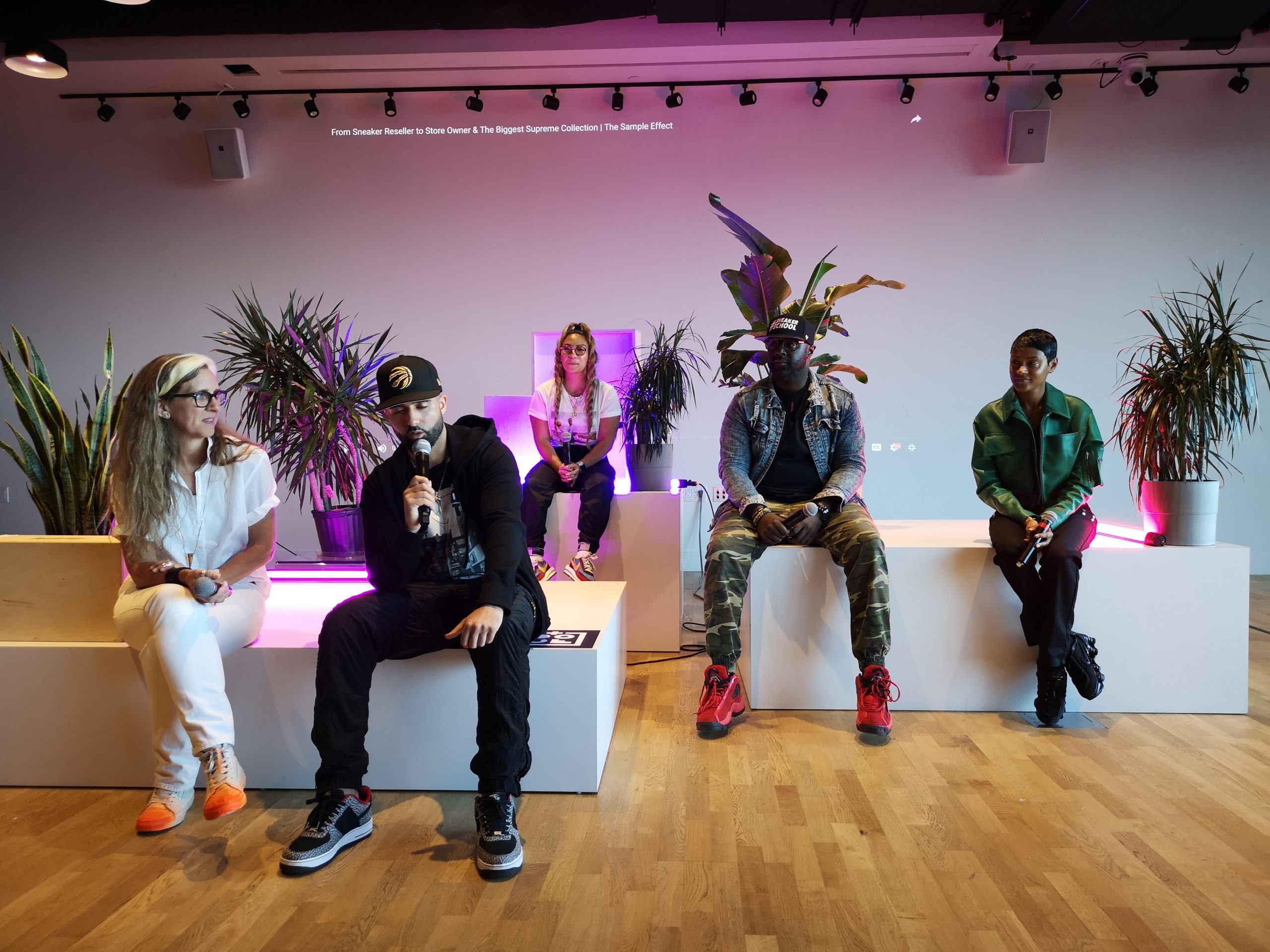A breakdown of where the sneaker industry came from and where it is headed.
Last week in Toronto, a conversation titled “Sneaker Essentials” was put on by the online education platform YellowBrick and Artscape Daniels Launchpad including stylist Sashà Elina De Oliveira, VP of partnerships at YellowBrick Dion Walcott, Shahin Shamshiri from the streetwear and consignment shop OD Toronto, Sarah Mullins from Fashion Institute of Technology (FIT) in New York City and was hosted by Christina Cheng who is co-host of the web-series “The Sample Effect.”
Designing a sneaker is a pipedream. You’d have to be Pharrell, Beyoncé, Kanye or Rihanna. If superstardom is not in the cards for you, then you have to at least be a juggernaut in the world of art and design like Jeff Staple, Daniel Ashram or Jun Takahashi. Or so most of us think.
The conversation titled “Sneaker Essentials” was put on by the online education platform YellowBrick and Artscape Daniels Launchpad to break down some of those myths and put a spotlight on the entry points to the sneaker industry, which has grown to see over $2 billion annually in the resale market alone.
Sarah Mullins has a unique vantage point on the evolution of the sneaker industry. She has been a full-time faculty member at FIT since 2003 teaching accessory design, but when she took the role as Chair of the Accessories Design department at FIT in 2012, she worked with her colleagues focused on footwear design and construction to respond to the shifts they were seeing in culture and design. “We took steps in developing our curriculum to be more inclusive of sneaker design and getting equipment and supplies for sneakers”, Mullins said.


While FIT has always had a full footwear degree program and added the in-person Performance Athletic Footwear certificate in 2003, Mullins has a lot of excitement about an online course Sneaker Essentials, which she described as being, “accessible to anyone from anywhere.”
The course was developed by YellowBrick in partnership with the Fashion Institute of Technology in New York City and COMPLEX. Dion Walcott of YellowBrick, who is based in Toronto, sees the course as bridging the gap between industry, academia and sneaker-loving audiences.
“The truth is, a lot of people focus on designing sneakers when there are so many different ways you can get into the sneaker industry”, shared Walcott, “the YellowBrick course gives you ideas on other ways you can get into the sneaker industry.”
Mullins elaborates on that notion: “The concept of it is really exposing the student to the industry as a whole so that someone who might just be attracted to it because they love sneakers, wear sneakers, and buy sneakers may want to get into the industry, but may not know where to begin”, said Mullins. The course covers a lot of ground, including history and culture, design, production and manufacturing, retail and distribution, strategy and marketing and media.


In addition to the economic opportunity in sneaker industry, one of the priorities shared between all of the partners on this course is seeing more representation in the industry.
“I think that people designing, manufacturing and retailing the shoes does need to evolve to represent more of the customers” said Mullins, “because I do think the customer is very diverse in terms of race and gender, and that isn’t represented on the back end.”
Speaking to what she sees as the most under-serviced area of the sneaker industry, Mullins noted, it isn’t the “hot and sexy” part of the industry. “It might be people interested in the manufacturing and production side, in terms of really trying to make changes in how it’s done”, said Mullins. With audible excitement about what that could mean for the industry, she added, “really getting some creative minds at that end of the industry, to me that is interesting.” Reiterating the point of the seemingly endless possibilities, she had another thought on the question of gaps in the business of sneakers: “I also think that people don’t realize how many niches that there are in the industry. There is someone who is focused on colour, someone who is focused on material, and someone who is focused on textile development”, said Mullins, citing examples of students she has seen key in on one aspect of the final product and do incredible things in that lane.
Returning to the purpose behind the “Sneaker Essentials” conversation that brought Mullins to Toronto, Patricia Yeboah of Launchpad recalled growing up loving sneakers, but not knowing the industry even existed. “I think it’s important to do events like Sneaker Essentials”, Yeboah explained, “because it gives creatives who are thinking this is something they see in the far-off world the vision that there is a path to it.”








